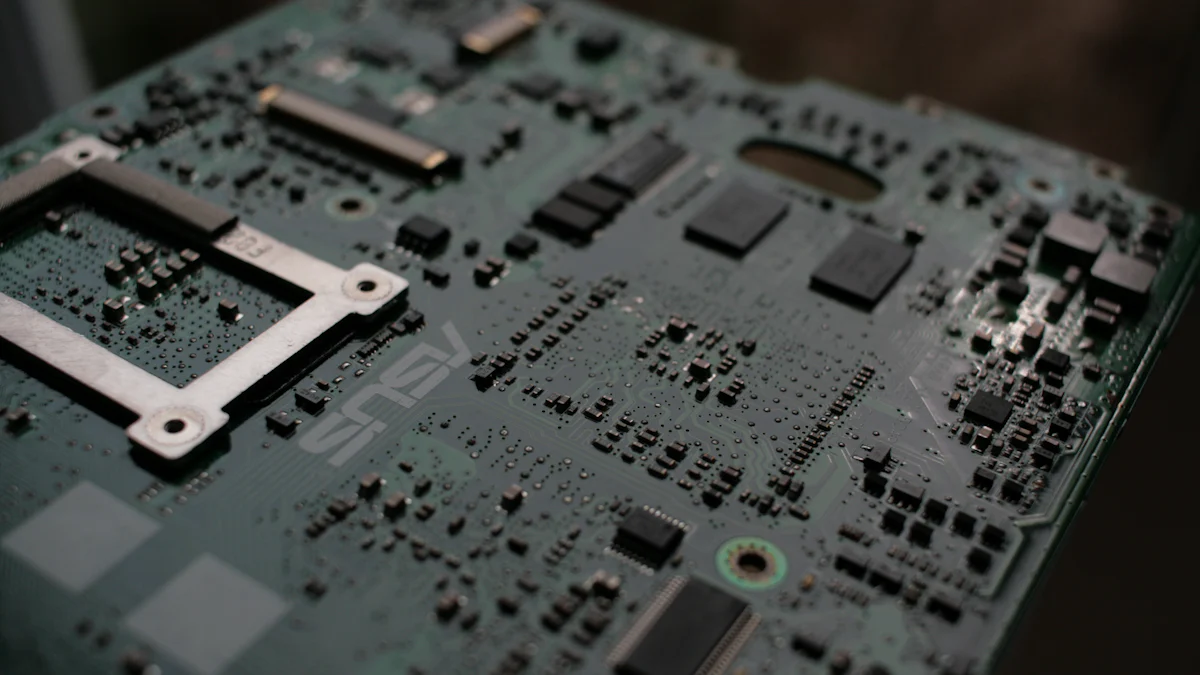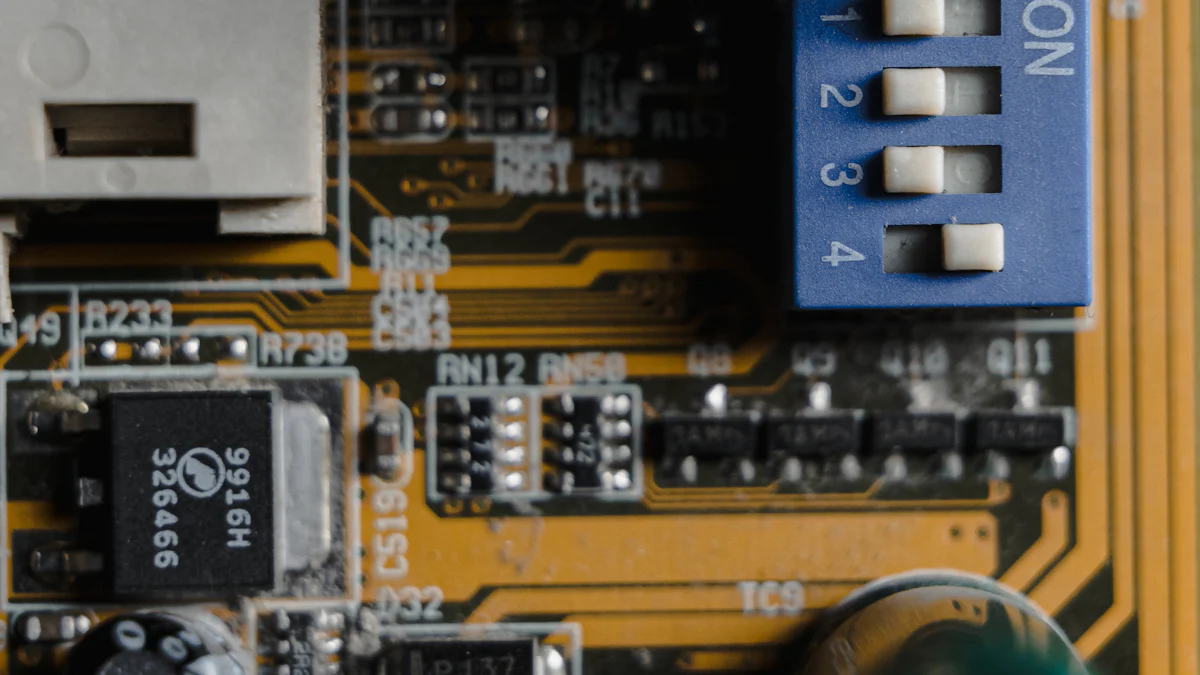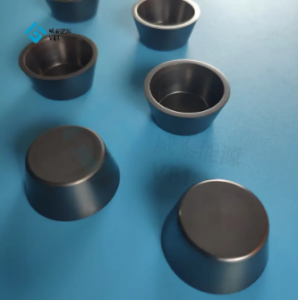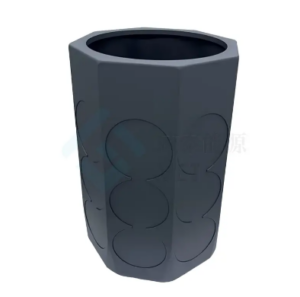
プラズマエッチングディスク技術は、比類のない精度で複雑な構造の創造を可能にすることにより、ディスク生産に革命を起こします。 このプロセスは、プラズマを使用して基板から材料を削除し、メーカーは近代的なディスク技術に必要な細かい詳細を達成することができます。 高精度で小さな機能を生み出す能力は、大量生産に欠かせないもの。 プラズマエッチングも生産サイクルを加速し、時間を節約し、コストを削減します。 スピード、汎用性、精度を組み合わせることで、先進的かつ効率的なディスク製品に対する成長する需要に応える業界を支援します.
要点
- プラズマエッチングは、複雑なディスク構造を高精度に作成し、近代的なディスク生産の礎石を作るために不可欠です.
- プロセスは材料を取除くためにイオン化されたガスを利用しま、高度の技術の要求に応じる顕微鏡機能の生産を可能にします.
- ボッシュプロセス、RIE、およびICP-RIEのような技術は、メーカーが特定の生産ニーズに基づいてそのアプローチを調整できるように、それぞれユニークな利点を提供します.
- ICP-RIEは、より高速なエッチング速度と優れた精度を実現し、複雑な設計や大量生産に最適です.
- 適切なプラズマエッチング技術を選択すると、設計複雑性、材料組成、生産量、コストなどのバランス要因が伴います.
- プラズマエッチング技術は、メーカーが急速に進化する技術面で、ディスク製品の性能を革新し、高めることを可能にします.
プラズマエッチングディスクプロセスの理解

プラズマエッチングは、近代的なディスクの生産に礎石になりました。 高度な技術を活用することで、今日の高性能ディスク技術に必要な精度と複雑さを実現できます。 このセクションでは、プラズマエッチングとその動作原理の根本的な部分に展開し、ディスク生産における変革的な役割を明確に理解しています.
プラズマエッチングとは?
ディスク生産におけるプラズマエッチングの定義と原理.
プラズマエッチングとは、イオン化ガス、プラズマ、基板から材料を除去する乾燥エッチングプロセスを指します。 ディスク生産では、この方法は、非常に精度の高い複雑なパターンと構造の作成を可能にします。 プロセスは、プラズマと材料表面の間の相互作用に依存します。, 高エネルギーイオンと反応種が分解し、不要な層を削除します。. この精密は、近代的なディスクで必要な顕微鏡機能を作成するために不可欠なプラズマエッチングを行います.
血漿エッチングの原理は、制御された化学および物理的反応を巻き起こします。 ガス組成、圧力、電力などのパラメータを調整することにより、メーカーは、特定の要件を満たすエッチングプロセスを調整することができます。 この適応性は、プラズマエッチングがディスク基板上に複雑なデザインを作成するための汎用性の高いツールであることを確認します.
プラズマエッチングプロセスにおける主要コンポーネントとその役割.
複数の重要なコンポーネントは、プラズマエッチングプロセスを駆動します。 ザ・オブ・ザ・ プラズマチャンバー エッチングが起こる環境として機能し、プラズマ生成に必要な条件を維持します。 室内では、フッ素や塩素などのガスが導入され、プラズマを形成します。 ザ・オブ・ザ・ 無線周波数(RF)電源 ガス分子を活性化し、エッチングに必要な高エネルギーイオンを作る.
について 基材ホルダー、またはチャックはプロセスの間にディスク材料をしっかり止めます。 過熱を防ぐための温度制御機能が頻繁に含まれており、基板を損傷させる可能性があります。 さらに、 真空システム 不純物を取除き、低圧を維持することによって制御された大気を保障します。 各コンポーネントは、プラズマエッチング要求の精度と効率性を実現するために重要な役割を果たしています.
プラズマエッチングの仕組み
物質除去におけるプラズマ放電の役割.
プラズマ放電はエッチングプロセスの心臓に嘘をつく。 プラズマチャンバー内でガスがイオン化されると、イオン、電子、ニュートラル粒子の混合物を形成します。 これらは基質の表面を爆破し、分子の結束を壊し、層によって材料の層を取除く粒子を満たしました。 このメカニズムは、プラズマエッチングが比類のない精度を達成し、ディスク技術で見つかった複雑な機能を作成するのに理想的です.
プラズマ放電のエネルギーはエッチング速度と深さを決定します。 高エネルギーイオンはより深いエッチングを可能にしますが、より低いエネルギー レベルはより敏感な物質的な取り外しを可能にします。 この柔軟性により、プラズマエッチングは、浅いパターンの作成から、深い複雑な構造の形成まで、ディスク生産の多様なニーズを満たすことができます.
エッチングプロセス中の化学的および物理的相互作用.
プラズマエッチングは、材料を除去するための化学的および物理的相互作用の組み合わせに依存します。 プラズマ中の化学反応性種、ラジカルなど、揮発性副産物を形成するために基材と反応する。 これらの副産物は、目的のパターンの背後にあるチャンバーから避難します。 物理的に、イオンボンドは分子結合を壊し、反応速度を増加させることによってエッチングプロセスを高めます.
このデュアルアクションアプローチにより、プラズマエッチングが精度と効率性を両立させることが可能になります。 化学反応は選択性を提供し、製造業者が特定の材料をターゲットにすることができますが、物理的な相互作用はプロセスの全体的な有効性を高めます。 プラズマエッチングは、ディスク製造の未来を形作るための強力なツールです.
ディスク生産におけるプラズマエッチング技術

プラズマエッチングディスク技術は、近代的なディスク製造に必要な精度と複雑性を実現する高度な技術に依存しています。 各方法は、メーカーが特定の生産要求を満たすことを可能にする、ユニークな利点を提供します。 このセクションでは、Bosch プロセス、Reactive Ion Etching (RIE)、および Inductively coupled Plasma Reactive Ion Etching (ICP-RIE) の 3 つの著名な技術を探ります.
ボッシュプロセス
ディスク製造におけるBoschプロセスの概要と適用.
ボッシュのプロセスは、高アスペクト・ラティオ構造を作成するために設計された特殊なプラズマエッチング技術として際立っています。 エッチングとパッシベーションのステップを交互にし、深さとサイドウォールプロファイルの正確な制御を保証します。 ディスク製造では、Boschプロセスは、高度なディスク技術に不可欠な複雑なパターンと深い微細構造を製造するために有意であることを証明しています.
メーカーは、Bosch プロセスを使用して、例外的な詳細と均一性を必要とするコンポーネントを製造します。 最小限のアンダーカットで垂直サイドウォールを作成する能力は、高い精度を要求するアプリケーションに最適です。 この技術は、マイクロ電光機械システム(MEMS)と半導体デバイスの製造において、ディスク製造プロセスと類似性を共有しています.
ボッシュプロセスの利点は、深く精密なエッチングを実現します.
ボッシュプロセスは、ディスクの生産に不可欠であるいくつかの利点を提供します。 その変更エッチングとパッシブアプローチは、エッチング深さとサイドウォールの角度の比類のない制御を保証します。 この精度により、メーカーは複雑な設計でも一貫した結果を得ることができます.
もう一つの重要な利点は、高アスペクト・ラティオ構造物を作り出す能力にあります。 垂直サイドウォールを維持し、材料の損失を最小限に抑えることにより、Bosch プロセスは、構造的完全性を損なうことなく、複雑な機能の作成を可能にします。 ディスクの性能および信頼性を高め、現代技術の厳密な要求を満たします.
反応イオンエッチング(RIE)
RIEは、ディスクの生産のために化学および物理的エッチングを組み合わせた方法.
反応イオンエッチング(RIE)は、化学反応と物理的なイオンボンバーメントを組み合わせ、基板から材料を除去します。 このデュアルアクションアプローチにより、RIEは、プラズマエッチングディスク生産における汎用性の高いツールとして、選択性と精度の両方を実現できます。 ガス組成や電力レベルなどのパラメータを調整することにより、メーカーは、特定の設計要件を満たすためにプロセスを調整することができます.
RIEは、ディスク表面に細かい詳細と複雑なパターンを作成する際に優れています。 特定の材料をターゲティングする能力は、所望の領域のみがエッチングされ、他の領域が無接触であることを保証します。 この選択性は、材料廃棄物を削減し、生産効率を高め、RIEを多くのディスク製造用途に好ましい選択にします.
複雑なディスク構造を作成するRIEの適用.
RIEは、近代的なディスクに見られる複雑な構造を作る上で重要な役割を果たしています。 その精度は、高性能ディスク技術に欠かせないマイクロスコープ機能の形成を可能にします。 製造業者はRIEに堅い許容および複雑な幾何学のコンポーネントを、最適機能性および耐久性を保障します作り出します.
この技術は、光学および電子応用で使用されるもののような高度のディスク設計の開発を、支えます。 化学・物理エッチングを組み合わせることで、ディスク業界の進化する要求に応えるために必要な柔軟性を提供します。 その適応性と有効性は、プラズマエッチングディスクの生産の礎石になります.
誘導カップル プラズマ反応イオンエッチング(ICP-RIE)
ディスク生産におけるICP-RIEの特徴と利点.
プラズマエッチング技術の最先端進歩を表す、誘導結合プラズマ反応イオンエッチング(ICP-RIE)。 高密度プラズマを生成し、エッチング速度の短縮と均一性の向上を実現します。 ディスク生産では、ICP-RIEは優れた選択性と精度を提供し、複数の材料や複雑なパターンを含む複雑なタスクに最適です.
ICP-RIEのスタンドアウト機能の1つは、周囲の領域に最小限のダメージで深くエッチングする能力です。 この機能により、メーカーは基板の完全性を損なうことなく、詳細な設計を作成することができます。 また、ICP-RIEは、高アスペクト・ラティオ・エッチングをサポートし、高度ディスク構造の製作に優れた精度を発揮します.
ICP-RIEと他のプラズマエッチング技術との比較.
他の技術と比較すると、ICP-RIEは精度と効率の面で明確な利点を示します。 低プラズマ密度で動作する RIE とは異なり、ICP-RIE は、より濃縮されたプラズマを生成し、エッチングを高速化し、材料除去の制御を改善します。 これにより、ICP-RIEは、深いシリコンエッチングと精密なパターン転送を必要とする要求の厳しい用途に特に適しています.
ボッシュのプロセスは、高アスペクト・ラティオ構造に有効でありながら、ICP-RIEの汎用性が欠けています。 複数の材料と複雑な設計を処理する後者の能力は、近代的なディスク生産のエッジを与えます。 速度、精度、適応性を組み合わせることで、プラズマエッチングディスク技術の新たな基準をセット.
プラズマエッチング法の比較
RIE対ICP-RIE
ディスク生産の精度、効率性、制御の違い.
反応イオンエッチング(RIE)と誘導結合プラズマ反応イオンエッチング(ICP-RIE)は、プラズマエッチングの2つの異なるアプローチを表しています。 各方法は異なった製造業の必要性のために適したそれらを作る独特な利点を提供します。 RIEはガス構成、圧力およびRF力のような変数を最適化することによって優秀な選択性を提供します。 この機能により、メーカーは特定の材料を精密にターゲットにすることができます。 しかし、RIEはプラズマ密度とイオンエネルギーを低下させ、より遅いエッチング速度を実現します。 この制限は、より深いエッチングが必要なときにプロセス時間を延長することができます.
一方、ICP-RIEは、イオンエネルギーの高密度プラズマを発生させます。 この機能により、エッチング速度が速くなり、選択性が向上します。特に、複雑なパターンや複数の材料を関与するタスクに最適です。 ICP-RIEはプロフィール制御でまたexcels、完全に縦の特徴を作り出し、高いanisotropyを維持します。 これらの資質は精密および効率を両方要求する複雑な設計のためにそれを理想的にします。 RIEは、よりシンプルなアプリケーションに有効のままですが、ICP-RIEは、高度なディスク生産のためのより高い基準を設定します.
特定のディスク製造ニーズに応じた各方法の適合性.
RIE と ICP-RIE の間の選択は、ディスク製造プロセスの特定の要件に依存します。 RIEは、選択性と材料のターゲティングが重要であるアプリケーションに適しています。 そのシンプルさと有効性は、高いエッチング速度や極端な精度を要求しないタスクの信頼性の高いオプションになります。 たとえば、メーカーは、浅いパターンを作成したり、複雑な設計で作業したりするためにRIEを使用することがあります.
ICP-RIEは、より要求の厳しいアプリケーションに不可欠であることを証明します。 最小限のダメージで深いエッチングを実現する能力は、複雑な構造の完全性を保証します。 この方法は、高アスペクト・ラティオのデザインをサポートし、チャレンジングなタスクでも、卓越した均一性を実現します。 メーカーは、タイトな公差と複雑な幾何学を必要とする高度なディスクコンポーネントを作成するために、しばしばICP-RIEに依存しています。 優れた制御と適応性を提供することで、ICP-RIEは現代のディスク技術の厳格な要求を満たしています.
右プラズマエッチング技術の選択
ディスク生産におけるプラズマエッチング方法の選択に影響を与える要因.
適切なプラズマエッチング技術を選択すると、いくつかの要因を評価します。 設計の複雑さは重要な役割を担います。 複雑なパターンや高アスペクト・ラティオ構造物は、しばしばICP-RIEの精度と効率性を必要とします。 逆に、よりシンプルなデザインは、RIEの簡単なアプローチから利益を得ることができます。 材料組成も決定に影響を及ぼします。 RIEの優れた選択性は、特定の材料を進化させるプロセスに適しています。ICP-RIEは複数の材料を容易に処理します.
生産量および時間の制約は更に選択に影響を与えます。 ICP-RIEの速いエッチング率は効率がパラマウントである大量生産にとって理想的です。 RIEは、より遅いレートで、より小規模な操作や、より厳しいタイムラインでプロジェクトに適している可能性があります。 費用対効果も期待できます。 ICP-RIEは高度な機能を提供していますが、そのシステムとプロセスはより高い費用を伴う場合があります。 メーカーは、これらの要因を量り、ニーズに最適な方法を決定する必要があります.
コスト・精度・生産効率の両立.
コスト、精度、効率性のバランスをとり、ディスク生産において重要なのが現状です。 RIEは、ハイエンドの機能を必要としないアプリケーションのための費用対効果の高いソリューションを提供します。 シンプルさは、運用コストを削減し、予算重視のメーカーにとって魅力的な選択肢となります。 しかしながら、その低速エッチング速度は、全体的な生産効率に影響を与える可能性があります.
ICP-RIEは高価ですが、比類のない精度と速度を実現します。 複雑な設計を処理し、深いエッチングを達成する能力は高度の適用のための投資を正当化します。 メーカーは、要求の厳しいプロセスのためにRIEを使用しながら、独自の強みを要求するタスクのために、ICP-RIEを保存することでコストを最適化することができます。 この戦略的アプローチは、リソースが効果的に割り当てられていることを保証します。製造業者は品質を妥協することなく生産目標を達成することができます.
「プラズマエッチング技術は、ディスクの生産を変革し、イノベーションを実践し、卓越性を実現」
RIEとICP-RIEの強みと限界を理解することで、メーカーは情報に基づいた決定を行うことができます。 この知識は、プラズマエッチングの可能性を最大限に活用し、ディスク技術の進歩を促進し、業界の成長を続ける要求に応えることを可能にします.
プラズマエッチングは、比類のない精度と効率性を発揮し、ディスク製造を再定義しました。 ボッシュプロセス、RIE、およびICP-RIEなどの技術は、近代的なディスク技術の複雑な要求を満たすためにメーカーに権限を与えます。 これらの方法は、卓越した品質を維持しながら、高度なデザインの作成を可能にします。 3次元アーキテクチャと原子スケールの精密に業界が進化する中、プラズマエッチングは今後も適応し続け、ディスク製造の未来を形づけるという関連性を確保しています。 これらの技術を習得することにより、メーカーは、優れた性能を達成し、急速に進歩する技術面でのイノベーションを推進することができます.






